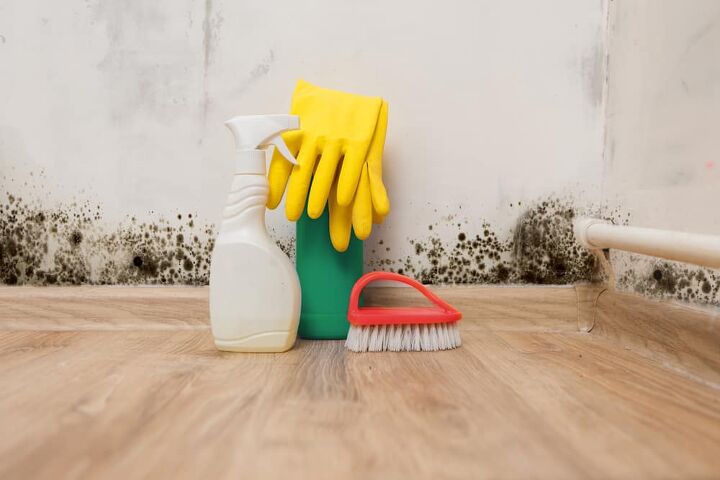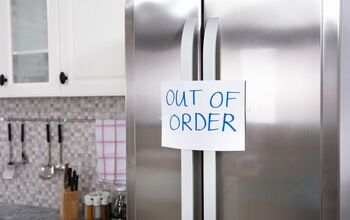How Long Does A Landlord Have To Fix A Mold Problem?

How long a landlord has to fix a mold problem depends on a variety of factors. When dealing with mold, many variables affect how it is dealt with. The time allowed for a landlord to fix mold issues is largely dependent on where the property is located and how severe the mold problem is.
Landlords have 30 days to remedy any significant mold problem starting from the date of discovery. However, this may change depending on your local laws. Check with the authorities in your area to see the guidelines for Landlords and mold remediation. Make note that Landlords are required to disclose any pre-existing mold conditions before renting the unit out.
Read on to find out what the landlord’s role is, as well as the tenant’s role when dealing with mold problems. Let’s get started!
How Long Do Landlords Have To Fix A Mold Problem?
Mold should be taken seriously by all landlords. Mold thrives in warm, wet environments, and it develops quickly in basements, attics, and other portions of buildings with inadequate ventilation and humidity levels.
Although mold is commonly linked with buildings in damp areas, any rental property might experience a mold outbreak due to an unchecked spill, malfunctioning plumbing, or even a misdirected lawn sprinkler.
How long a Landlord has to fix a mold problem depends on your local and state laws. Each state has its guidelines, so make sure you check.
Check Local Laws
Local laws are the first place that you should look when trying to determine how long a landlord has to fix a mold problem. Each jurisdiction deals with mold in its way and requires different things from landlords when a mold problem is reported.
Mold laws tend to change based on climate and the types of mold that are common to particular parts of the country. As such, you will see some municipalities assisting tenants with their mold complaints more than in others.
What Is The Landlord’s Role When It Comes To Mold?
In states that require landlords to keep mold at bay, there are generally two main areas of focus. Landlords should take steps to remove any mold that exists as well as minimize factors that cause mold growth.
Mold Should Be Disclosed
One thing that most jurisdictions agree on is the fact that landlords are required to inform tenants about the existence of mold. If tenants are not informed, the landlord is subject to possible liability issues.
While there are quite a few reasons for requiring landlords to be upfront about mold issues, one of the primary ones is the health of their tenants.
A landlord has no way of knowing whether the mold in a home will hurt their new tenants. As a result, not divulging that information is irresponsible and illegal.
Ignorance Is No Excuse
It is quite common for landlords to claim ignorance of a mold problem when they do not wish to deal with it. This is especially true when the problem is significant and would require excessive time, money, and effort to fix.
In most cases, however, claiming ignorance is the same thing as neglect. And, as with many other issues that landlords are responsible for, neglect is not an option when it comes to mold and the health of their tenants.
Based on that law, mold becomes a major issue once it has reached the point of impacting the safety of any tenants living in a property.
Warranty Of Habitability
In many states across the US, some laws involve mold as well as other potentially harmful substances around a home.
While these laws often do not specify mold, per se, they do pertain to the landlord’s responsibility and obligation to provide a safe and healthy domicile to their tenants.
What Is The Tenant’s Role When It Comes To Mold?
If the mold problem is caused by negligence on the part of the landlord or has come about overtime for reasons other than the tenant, the landlord should remedy the problem. If they refuse, the tenant has the right to take certain steps to protect themselves.
Withholding Rent
In some states that have laws protecting tenants from unchecked mold issues, including New York, renters have the right to withhold rent payments until the problem is solved. This action should be taken cautiously, however.
For this to work out positively for tenants, the courts must agree that the mold is making the home uninhabitable. If a tenant decides to stop paying rent too early, the mold problem ends up being too minor, the tenant would be responsible for any back pay and damages to the landlord.
Repair And Deduct
Another popular scheme that many renters utilize is the repair and deduct method. Again, this is best done when the mold problem has created an uninhabitable situation. The way this method works is to fix the issue yourself and then deduct the cost of repairs from the rent.
There are some things to keep in mind when considering the Repair and Deduct route.
- The landlord may or may not agree to the necessity for repairs.
- The repair cost may have to fit within a certain range to be considered an ‘acceptable cost’.
- You will need to prove to the courts that the mold problem was severe and that the landlord refused to help.
- There may be a clause in the rental agreement stating that you have do not have the right to enter into a repair and deduct plan of action.
- You may need to work with preapproved plumbers and mold removal specialists that are on the landlord’s short call list.
If you decide to go the repair and deduct route, it is advisable to communicate your desire with your landlord before taking action. The landlord will often agree to a less costly (for him/her) solution to the problem.
Lawsuit
In extreme cases, the tenant can take their landlords to court and sue them. There are many reasons that a tenant could sue. Here are a few of the most common examples.
- Refusal to repair broken pipes and leaks – especially if it results in a widespread mold infestation.
- Medical bills related to mold-inflicted ailments.
- Property damage.
- The physical and psychological distress caused by the mold
When Is Mold The Tenant’s Responsibility?
Mold is not always the landlord’s responsibility. While many state laws consider mold to be the landlord’s responsibility in most cases, there are instances when the tenant can be included in that responsibility.
Examples include situations when tenants create conditions conducive to mold growth through negligence, and when tenants fail to inform their landlords about the problem promptly.
If a mold problem is deemed a tenant’s responsibility, the landlord can charge the tenant a fee to cover the removal and repair costs incurred from solving the problem.
What Causes Mold to Grow Inside?
Mold has been present on our planet for millions of years, according to the Centers for Disease Control (CDC). Mold can enter a property through open doors, windows, vents, and heating and cooling systems, as well as through property damage that allows water in or a flood.
Mold will grow anywhere there is moisture and on almost any surface, including paper, cardboard, ceiling tiles, wood, paint, wallpaper, insulation, drywall, carpet, fabric, and upholstery.
Can I Sue My Landlord for Mold Exposure?
Yes, you have the right to sue your landlord for mold damage and exposure. Whether you’ve just discovered mold, you or members of your family have developed symptoms of mold infection, or mold has damaged your household goods.
If the landlord is not insured against mold, he or she is ultimately responsible for keeping the rental property in habitable condition – which includes fixing water leaks and remediating the resulting mold.

Benjamin is a proud homeowner who loves to write about DIY projects and home improvement projects. Traveling, perfecting his home, and spending time with his family are just a few of the many things that keep him inspired.
More by Benjamin Wright












![The 10 Best Table Saws - [2022 Reviews & Buyer's Guide]](https://cdn-fastly.upgradedhome.com/media/2023/07/31/9070645/the-10-best-table-saws-2022-reviews-buyer-s-guide.jpg?size=350x220)

![10 Best Cordless Leaf Blowers – [2022 Reviews & Ultimate Guide]](https://cdn-fastly.upgradedhome.com/media/2023/07/31/9070789/10-best-cordless-leaf-blowers-2022-reviews-ultimate-guide.jpg?size=350x220)












